Often forgotten, yet no less important, is the contribution of Trilinga desa’s and Bhaarathavarsha’s vanvaasis. Time and again, they have not only featured in our epics (such as Nala of Naisadheeya fame), but have given their lives in the cause of freedom and Dharma. While the Bheels of Rajasthan made their mark against the mughals, there was one Teluguland Tribal who resolutely opposed the tyranny of the nizam and his despotic regime.
The next article in our Continuing Series on Telugu Personalities is a great Freedom Fighter who should be known to all Telingas: Komaram Bheem
Background
The story of Komaram Bheem is one that is steeped in self-respect and sacrifice at even a young age. Born in 1900 at Jodeghat, he was the son of Komaram Chinnu and Sombai. [4] There was an agglomeration of 100 Gond villages, headed by a chief, in Adilabad District of modern Telangana. The old and correct name of Adilabad is Adlapur.
The Gonds in nizam Hyderabad suffered from the depredations of razakar rule. Many of them lived primarily through subsistence farming and hunter-gatherer lifestyle. While historically, their rights were not always respected by city folk, there was a previously unknown brutality that arrived with central asian turk occupiers. The Nizam’s henchmen would frequently abduct young Gonds and force them into a form of slavery known as vetti chaakiri. [7, 6] Abductions of women, married or otherwise, were common crimes by the turkic, urdu-speaking hyderabadi elites.
The British had passed many laws in areas of direct administration, to facilitate their exploitation of the forest for commercial purposes. The British resident in Hyderabad directed the subservient nizam to do the same in his subordinate princely state. As a result, Gond lands were placed under high levels of taxation and oppressive forest warden administration. [7,8] The British too per the testimony of the locals themselves, would abduct and outrage young Gond women and put young children in chains to sell as slaves to the nizam’s doras. [7, 10]
Up in arms at the atrocities committed by the Britishers, the Gonds sent an emissary to demand that they avoid the 100 Gond villages. True to their conduct in war, the British killed the Gond emissary and sent his head to the Gond tribal headman. [7, 11]
It is in this context that Komaram Chinnu spoke up.
“When Komaram Bheem was barely 15 years old his father was killed by forest officials for asserting Adivasis’ rights. After his father’s death, his family migrated to Surdhapur village. Young Komaram Bheem was agitated over his father’s cold-blooded murder.” [1]
As a result, he began an agitation for the rights of tribals. They had long suffered the depradation of the british-nizam condominium which exploited townsfolk telugu and tribal alike.
Concerned with the well-being of his fellow Gonds, Komaram Bheem demanded self-governance for 12 tribal villages. Particularly intolerable was the tax on tribal cattle grazing and heavy tax on tribal grains, which naturally impoverished Gonds. However, this legitimate demand was denied by the administration, as were diplomatic talks with the nizam.
Outraged, young Bheem sparked a revolt against the tyrannical regime of the Hyderabad nizam. For over a decade, he would defy the turkic british puppet who was styled a subsidiary prince.
“As part of the war, Siddique, a landlord, who grabbed the Adivasis’ land in Surdhapur village, was hacked to death. The guerrilla army of Bheem attacked a number of landlords and killed them. Komaram Bheem claimed that Jal, Jungle, Jameen belonged to only Adivasis and the Nizam has no right over here. Making Jode Ghat the centre of his activities, Bheem continued his guerrilla war from 1928 to 1940. “ [1]
One Manyam Veerudu of Telugu Land would motivate the rise of another. Contrary to the modern revisionist view of localised interests, Komaram Bheem (like many other Indic freedom fighters) would be driven by All-India interests.
“Bheem was inspired by Alluri Sitaramaraju, and his heart was aflame when he heard the death of Bhagat Singh. He finally reached the Gond land to sow the seeds of revolution. Realising that the time was ripe to revolt against the Nizam Government’s injustice, Komaram Bheem became a veritable deity, raging with the fire of revolt. “ [3]
At long last, the heroic campaign of this forest freedom fight would finally end. Komaram Bheem would attain martyrdom at Babijhari.
“Unable to stop his movement, the Nizam army attacked Komaram Bheem’s headquarters on October 19, 1940 with the help of a covert, Kurdhu Patel at Jode Ghat forest and eleven Adivasi leaders, including Komaram Bheem were killed. Adivasis observe the death anniversary of Komaram Bheem every year on Aswayuja Powrnami“ [1]
Poetically, the brave hero would die on Jodeghat hill, not far from his place of birth. He had selected those grounds strategically as terrain ideally suited for defence. With bows and arrows, these Tribals of Telugu land would long defy modern guns. Veer Komaram Bheem’s Samaadhi rests upon that very hill today. [5]
Achievements
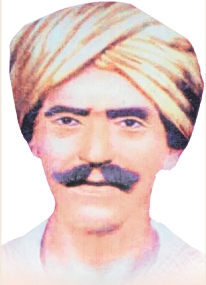
- Jal, Jungle, Jameen,
- Launched a large protest against Nizam atrocities on tribals
- Led a guerilla campaign against Hyderabad Razakar rulers
- Defied both the British Army and Hyderabad police for years
The Tribal Freedom Movement of Komaram Bheem was more than just a tempest in a teapot. His slaying of the despotic Siddique, would necessitate young Bheem to take shelter in Assam. His five to six years in the tea plantations of the North East would seed his consciousness about the Indian Freedom Movement. Fellow native of Telugu Land Alluri Seetarama Raju as well as Punjabi Bhagat Singh would inspire him.
So effective was Komaram Bheem’s guerilla war against the illegitimate Turk occupiers of Telangana, that only dishonourable means would prove to be their recourse (and calling card). Where force-of-arms failed, the time-tested turk tactic of treachery would prove effective (as it had for a thousand years).
“With the help of the British army, Talukdar Abdul Sattar, who earlier failed to capture Bheem, attacked his hideout at Babijhari. Kurdu Patel, a havaldar in Bheem’s Gond army, backstabbed him by giving directions of Bheem’s hideout. A team of 90 policemen, armed with guns, attacked Bheem, who did not have any armour to protect himself. On that fateful night, hundreds of followers of Bheem armed with bows, arrows, swords and spears launched a frontal assault, from just a dozen feet away from the Nizam’s police force.” [3]
The Tribal Thunderstorm of Telangana attained Veergathi, but his memory would motivate not only Telugu Scheduled Tribes, but also the wider population of Telangana to lead the Sayudha Poraatam to successful conclusion by overthrowing the Nizam Sarkar.
Legacy
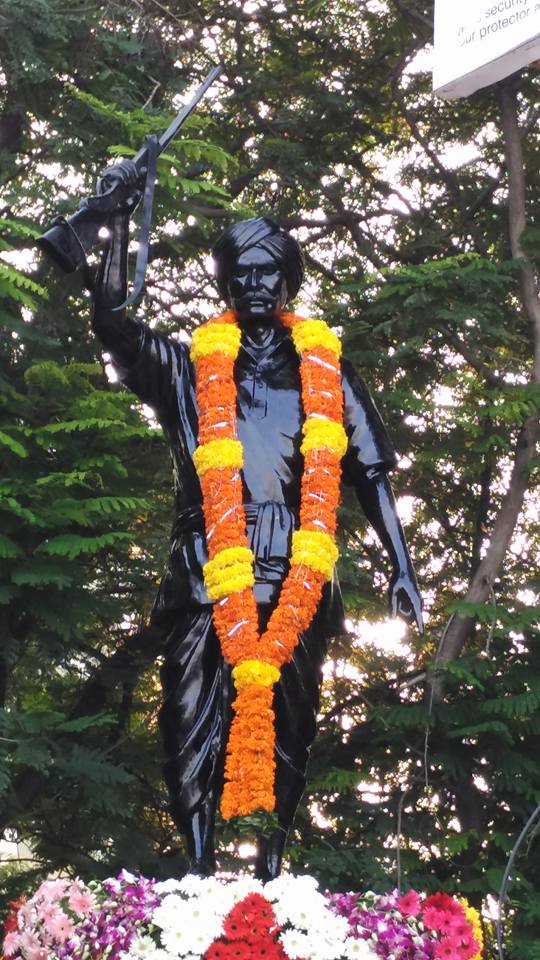
“He fought against the Asaf Jahi dynasty for the liberation of Hyderabad. Bheem openly fought against the Nizam government in a guerrilla campaign.” [3]
The legacy of Komaram Bheem gaaru cannot be minimised. At time when petty pedants puff about in propaganda, it is imperative that the true history of Teluguland tribals be given its share of spotlight. Colonials (and neo-colonials) have long engaged in divide-and-rule of caste vs caste. But yet another fault line is City folk vs Scheduled Tribe. However, Telugu ST’s such as Komaram Bheem gaaru are respected by all true Telugus. The tribal contribution to the freedom fight against exploitative regimes very much aligned with native vs foreign. The people of the forest and the people of the city share common interests of not only language but culture.
Here was the song the Gonds of the Adilabad forest used to sing:
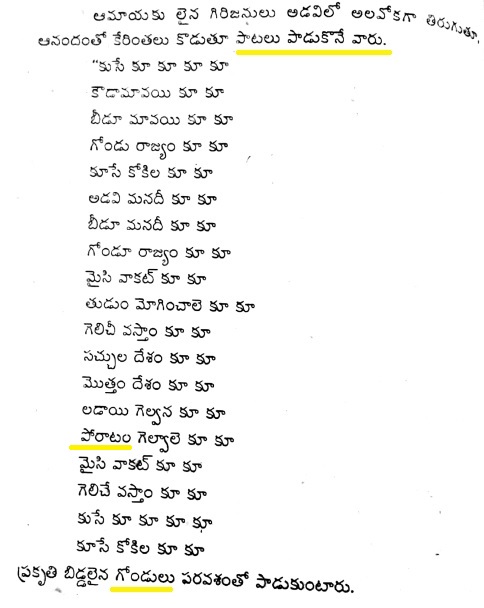
The systematic exploitation of his people by the british and nizam hyderabadis was too much for Komaram Bheem to bear.
“He was annoyed when the atrocities against the tribal families by the forest officials increased manifold. Above all, the Nizam government levied cess on the tribal people when they graze their cattle in the forest areas. The forest officials forcibly collected this cess from Adivasis. “ [1]
For 12 years, the formidable forest warrior would defy the atrocious asaf jahs and make them pay for their crimes against the common people of Hyderabad state. His martyrdom is both inspiration to the masses and lesson to the Turks that Telugus, tribal or townsfolk, will wage war to defend their freedom. The Telugu-Turk wars would reach their conclusion with the Liberation of Hyderabad from the clutches of foreign-origin occupiers. Urdu speaking colonists were trounced through the popular revolt of the Telugu-speaking masses. The bowman of Jodeghat remains both legend and pop culture hero.
Unfortunately, as is all too frequent in India, the legacy of heroes is often forgotten. The grandchildren of Komaram Bheem languish in penury today.
“Komaram Sombai, the granddaughter of Adilabad’s most illustrious son, the legendary Gond martyr Komaram Bheem cannot afford an LPG connection. Her great lineage also does not help her in repaying the paltry Rs. 15,000 as outstanding dues on her old institutional crop loan”. [6]
As of 2014, the proud Gond Komaram family persists despite this neglect. And this is the situation for just one of his descendants. “Bheem had two wives, Bheembai and Sombai, from whom he had a daughter Chahkati Rathubai and son Madhav Rao respectively. Rathubai is the mother of Komaram Sombai and her late sister, while Madhav Rao sired three sons and two daughters.” [6]
The tribal identity of forest folk should be preserved, as should their yaasas (dialects) and unique tradition. But as the life and legacy of veer Komaram Bheem proves, in the battle against adharma, a Bhaarathiya is Bhaarathiya— whether nagaravaasi or vanavaasi.
- “Komaram Bheem’s Ideals to be kept Alive”. The Hans India. https://www.thehansindia.com/posts/index/Telangana/2015-10-27/Komaram-Bheems-ideals-to-be-kept-alive/182689
- “The Komaram Bheem Story”. Times of India. https://timesofindia.indiatimes.com/entertainment/telugu/movies/news/The-Komaram-Bheem-story/articleshow/17557503.cms?referral=PM
- “Komaram Bheem: A Great Revolutionary”. The Hans India. https://www.thehansindia.com/posts/index/News-Analysis/2014-03-04/Komaram-Bheem-a-great-revolutionary/88101
- “Rich Tribute Paid to Komaram Bheem”. Deccan Chronicle. https://www.deccanchronicle.com/141009/nation-current-affairs/article/rich-tribute-paid-komaram-bheem
- “Tribal museum on Jodeghat Hillock”. Deccan Chronicle. https://www.deccanchronicle.com/141006/nation-current-affairs/article/tribal-museum-jodeghat-hillock
- “Martyr’s kin Struggle to Make Ends Meet.” The Hindu. https://www.thehindu.com/news/national/telangana/article11206884.ece
- Bhooka Chinna, Venkatesvara. Komaramu Bheema Charithra
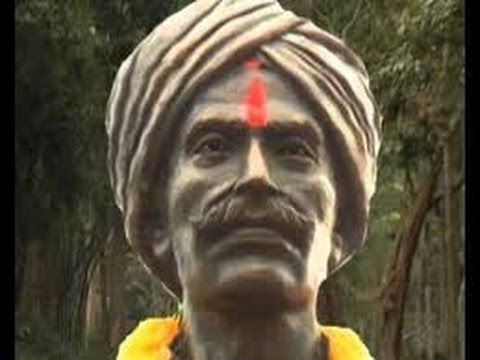
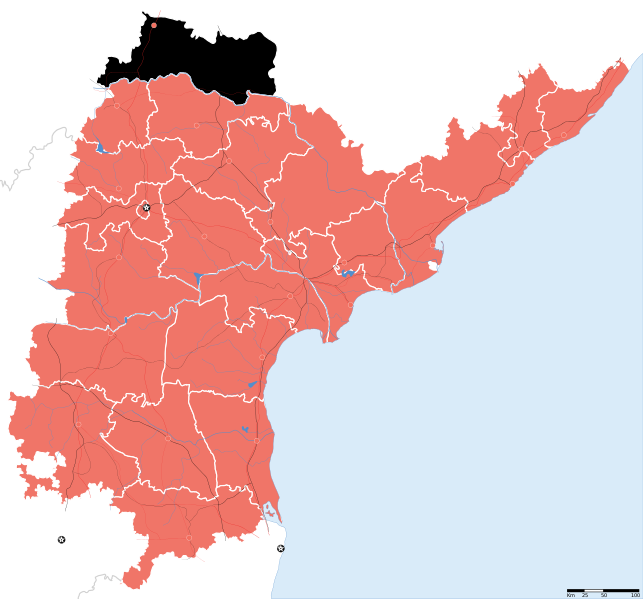
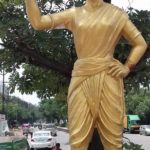





Very informative content